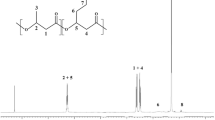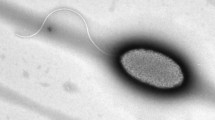Abstract
A 3.0-kb genomic fragment has been isolated from Rhodospirillum rubrum (ATCC 25903) that contains an open reading frame (ORF) with strong homology to other known polyhydroxyalkanoate (PHA) synthase genes. This ORF has lower homology to the R. rubrum strain Ha PHA synthase than would be expected within the same species. We have conducted a series of heterologous expression studies evaluating the in vivo substrate specificity of PHA synthase genes from Rhodobacter sphaeroides, Ralstonia eutropha (formerly Alcaligenes eutrophus), Thiocystis violacea, and Nocardia corrallina, within the PHA-synthase-negative hosts, Ralstonia eutropha DSM541 and Pseudomonas putida GpP104. The N. corrallina PHA synthase incorporated the highest percentage of C5 monomers in the polymer when fermented in medium supplemented with 0.1% heptanoate as the sole carbon source. When the T. violacea and R. sphaeroides were expressed in the PHA-negative host DSM541, a greater percentage of C5 monomer was observed in the polymer as compared to the expression of the PHA synthase of R. eutropha, when the transconjugants were fermented in medium supplemented with 0.4% propionate. Evaluation for preference of medium-chain-length monomers demonstrated the flexibility of the N. corrallina, T. violacea, and R. eutropha synthase genes to polymerize a copolyester composed of short- and medium-chain-length monomers when the respective transconjugants were fermented in medium supplemented with 0.5% octanoate. These studies demonstrate that the PHA synthase from N. corrallina, T. violacea, and R. eutropha are able to polymerize a copolyester composed of short- and medium-chain-length monomers, while the PHA synthase from R. sphaeroides lacks this ability and only produces a short-chain-length polymer. These observations suggest that the composition of the PHA from the PHA-producing organisms does not necessarily reflect the inherent specificity of the PHA synthase.
Similar content being viewed by others
Author information
Authors and Affiliations
Additional information
Received: 16 March 1999 / Received revision: 24 August 1999 / Accepted: 24 September 1999
Rights and permissions
About this article
Cite this article
Clemente, T., Shah, D., Tran, M. et al. Sequence of PHA synthase gene from two strains of Rhodospirillum rubrum and in vivo substrate specificity of four PHA synthases across two heterologous expression systems. Appl Microbiol Biotechnol 53, 420–429 (2000). https://doi.org/10.1007/s002530051636
Issue Date:
DOI: https://doi.org/10.1007/s002530051636




